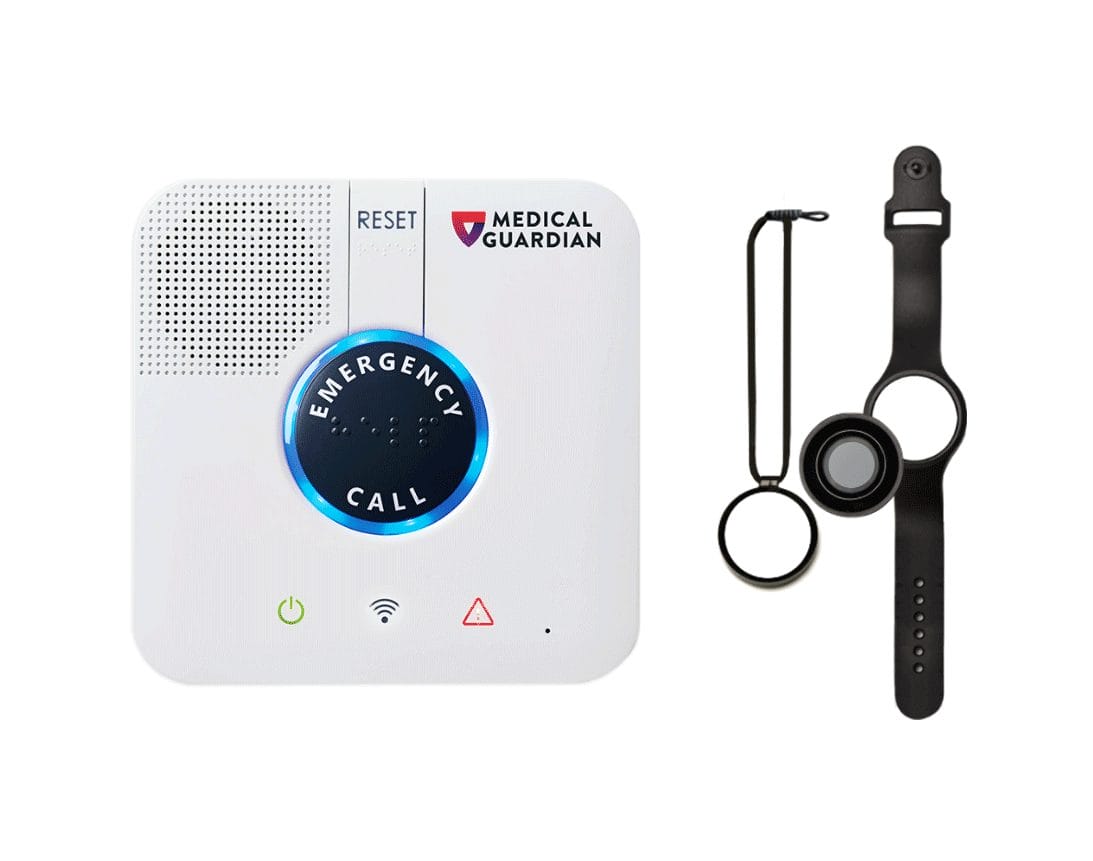
Those who want access to television shows, news, and movies now have many cable alternatives and can watch live TV without cable. This can be especially helpful for seniors who live on fixed budgets or who need to make a choice about TV service in a new apartment in an assisted living community. Here, we’ll go over how to watch TV without cable and how to view favorite shows, movies, and other content through various providers.
What are streaming services?
Streaming platforms have revolutionized how we consume media, allowing instant and on-demand access to thousands of shows, movies, and live TV without the need for a traditional cable subscription. Let’s explore some of the most popular streaming platforms. The prices provided below are current as of this article’s publishing; streaming services often add new plans, adjust their terms and conditions, and change their prices over time.
Watch live TV without cable using these streaming services
Several streaming platforms offer a live TV experience for those interested in cable alternatives. Hulu + Live TV, YouTube TV, and Sling TV have emerged as cable TV alternatives, providing access to live channels with various types of content, including news, sports, and entertainment. These platforms allow viewers to stream live TV without being tethered to the schedules and contracts of conventional cable providers.
Hulu + Live TV
Those who want to watch TV but don’t want to pay for cable service can consider Hulu + Live TV. This add-on service to a Hulu subscription allows you to watch live TV programming, like your favorite news, network TV channels, and sports teams. You have many options about how much content you can access. The most basic version is $75.99 monthly as of February 2024 and includes live TV only. You won’t be able to access Hulu’s content library or other platforms available through other plans, but if you’re looking for TV only, this could be an option for you. Click the “view channels in your area” button and enter your zip code to see the channels you can watch with your subscription.
YouTube TV
YouTube is famous for its endless video content but also has a TV service that allows you to watch live TV without a cable subscription. The basic subscription is $72.99 per month and grants you access to YouTube TV’s wide range of channels and content. With over 100 channels in categories like local news, sports, lifestyle, and family content, you’ll never be bored. YouTube TV also offers a Spanish plan and NFL Sunday Ticket.
Sling TV
Sling TV offers live TV programming with no annual contracts. Sling’s plans are highly customizable, so you’ll just need to figure out what content you want to watch and choose the plan with the right channels for you. If you discover you want more content, that’s OK — simply choose from different add-on packages and start watching. Sling’s Orange Plan starts at just $40 per month and allows subscribers to stream 32 channels on one device. If you want more channels, you can upgrade to the Blue Plan for $45 per month and watch on up to three devices. Add on a number of other channels for a bit more.
Cable alternatives for TV shows and movies
When it comes to watching TV shows without cable, services like Netflix, Amazon Prime Video, Disney+, and HBO Max have become household names. Each offers a unique library of movies, original series, and documentaries catering to diverse tastes and interests. Unlike cable TV, these services provide the freedom to watch whatever you want, whenever you want, without waiting for a scheduled airing time.
Netflix
This streaming service allows subscribers to watch TV shows and movies and choose from multiple subscription plans at varying prices. The standard with ads subscription is only $6.99 per month, which can be cost-effective for seniors on a budget. If a family member in a different household already has a subscription and wants to share it with their senior loved one, Netflix has created an option for that. Subscribers of the standard with no ads plan ($15.49 a month) can add an extra non-household member for only $7.99 monthly. That way, Mom, Dad, or a grandparent doesn’t need to create their own account. Simply log in to the app and watch any of the programming.
Amazon Prime Video
Amazon Prime is a subscription service through Amazon that gives subscribers free, quick shipping on millions of products, and its video streaming service gives instant access to TV shows and movies as well. Prime Video costs $14.99 per month as of February 2024. If you receive Medicaid, EBT, or other public benefits, you may qualify for Amazon services at a discounted rate through Prime Access.
Disney+
For just $7.99 a month, subscribers can access Disney+ content through its basic subscription plan. Subscribers will watch ads with this plan, but you’ll have access to Disney programming, which includes countless Disney movies, shows, documentaries, and more. At $9.99 a month, subscribers can access Disney+ and Hulu programs with ads. If there’s a sports fan in the household, the Disney Trio plan might do the trick: Add ESPN+ access into the mix for $14.99 per month. See Disney+’s pricing to learn more about these options and the cost of these plan options if you’d like to cut out the ads.
Max (formerly HBO Max)
HBO Max is now known simply as Max, but you still get all the cinematic masterpieces you loved from HBO. Known for its seemingly endless movie selection, excellent TV shows, and original programming, Max gives you access to its content for only $9.99 per month with ads. You can nix the ads for $15.99 per month if you’d like. Max now offers sports programming as an optional add-on.
Streaming platforms for specific interests
Diving deeper into the alternatives to cable TV, there are numerous niche streaming platforms that cater to specific genres and interests. Whether you want to watch British TV and UK-based content, Broadway musicals, educational and nonfiction programming, or classic movies and foreign films, there’s a streaming service for you. These niche services underscore the personalized nature of streaming, allowing users to curate their viewing experience based on their unique preferences.
Acorn TV
Acorn TV streams British network movies and TV series and also creates its own Acorn Originals. You can purchase this subscription for just $6.99 a month or pay ahead for a year and receive a discounted rate. You can also buy the subscription as a gift. Test it out with a free trial.
BritBox
Another British TV platform, BritBox is connected to the BBC and offers many other British programs, movies, and content. Get BritBox for $8.99 per month — you can try it for free for seven days first if you’d like.
BroadwayHD
BroadwayHD offers subscribers access to hundreds of Broadway musicals. For $19.99 per month, view all your favorites and new musical theater. Choose from a number of different categories and watch your favorites anywhere, anytime. You can also give this subscription as a gift.
CuriosityStream
CuriosityStream is a streaming platform that for just $5.84 per month grants access to multiple streaming services that aren’t filled with your typical programming. Watch documentaries, cooking shows, kids’ educational programming, and talks and specials. This content is for the curious at a great price. See the content and programming categories here.
The Criterion Channel
If you like classic movies and foreign films or just love the art of film, The Criterion Channel could be for you. Get the subscription for $10.99 per month or $99.99 for the year and watch all the classic favorites and films from around the world. You can also get access to extra content and see interviews and behind-the-scenes footage to dive deeper into the world of film. See the complete list of movies here — filter by genre, country, decade, and director to see the in-depth content Criterion has to offer.
How to access a cable alternative
The transition to TV without cable is facilitated by various technologies and platforms. Understanding how to access these services is crucial for anyone looking to make the switch from traditional cable TV.
Internet providers and streaming access
Many internet providers now offer bundles that include access to popular streaming platforms, often at a discounted rate. This approach can simplify the process for users, integrating their internet and streaming needs into a single package. It’s an appealing option for those new to the streaming world, offering a straightforward path to a wide range of content without needing multiple subscriptions.
Signing up for streaming subscriptions
Getting started with streaming services is typically a straightforward process. Most platforms offer simple online sign-up procedures, where users can create an account, select a subscription plan, and start watching within minutes. This ease of access is a relief compared to cable TV providers’ often complicated and contract-bound processes.
Using smart TVs and streaming devices
For those wondering how to watch TV without cable, smart TVs and streaming devices like Roku, Amazon Fire TV Stick, and Apple TV provide the answer. These devices connect to your TV and internet, transforming a television into a smart device capable of accessing a wide range of streaming services. This hardware is central to the cable-free experience, allowing users to easily navigate between different services and enjoy a high-quality viewing experience on their existing TV sets.
Considerations before cutting the cable cord
Subscribing to streaming services can help you get the viewing experience you want. Here are some considerations to remember before you decide to watch TV without cable.
Necessary technology
Embracing TV without cable means ensuring you have the necessary technology to support your streaming needs. This often involves more than just having a broadband internet connection. A smart TV or a streaming device becomes essential for accessing various streaming services. Additionally, ensuring your internet connection is fast and reliable is crucial, as streaming quality and buffering times depend on your internet speed.
Potential costs
While one of the main attractions of cable alternatives is the potential for cost savings, it’s important to approach this aspect intentionally. The costs associated with subscribing to multiple streaming services can quickly add up, potentially negating the financial benefits of cutting the cable cord. It’s essential for individuals to evaluate their viewing habits and prioritize which services are most important to them. This may involve a trade-off between the variety of content available and the monthly subscription costs. Viewers can tailor their subscriptions to fit their budget and viewing preferences by carefully selecting a combination of general and niche streaming services.
Managing multiple services
The convenience of accessing a wide range of content across different platforms comes with its own challenges, notably the complexity of managing multiple streaming services. Keeping track of the available content on each service, along with different login credentials and billing cycles, can become difficult. However, strategies to help with these challenges include using password managers for login credentials and setting reminders for billing dates. Some viewers might opt for aggregation services or devices that allow easy switching between platforms, further streamlining the viewing experience.
The journey from traditional cable TV to exploring the many cable alternatives available today reflects a broader shift in consumer preferences toward more personalized, flexible, and on-demand viewing experiences. The rise of streaming services offering live TV and platforms dedicated to shows, movies, and niche interests has paved the way for a new era of television consumption. Viewers can enjoy TV entertainment without cable by understanding how to access these services, considering the necessary technology, and thoughtfully managing the costs and logistics of multiple subscriptions.








